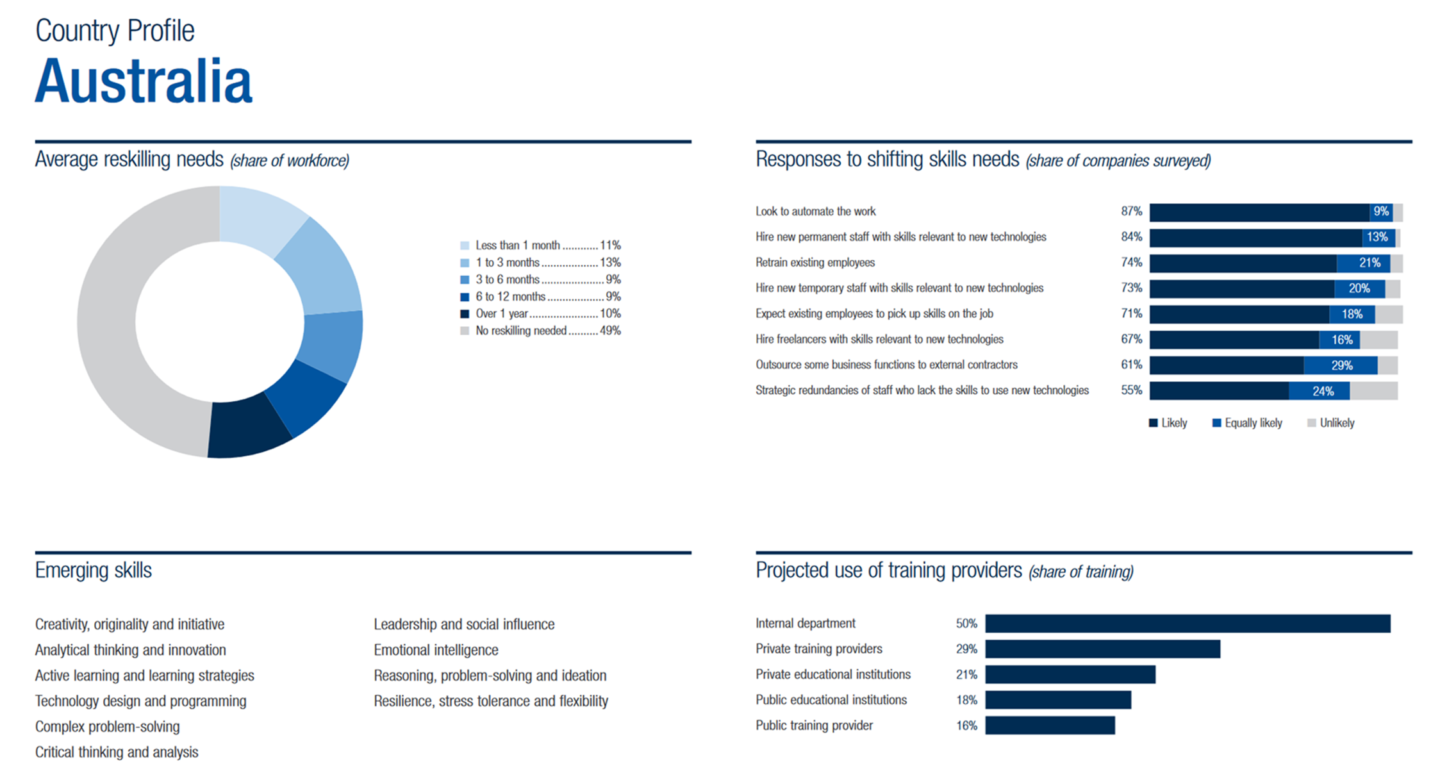How will the skills gap affect the way Australian companies see workplace learning in the future? [Q&A]
The need for “upskilling” and “reskilling” is one of most common themes facing Australian companies. This week I caught up with our CEO Tom Richardson to get his perspective on the skills gap challenge and how it will affect the way organisations approach workplace learning in 2020 and beyond.
What are the upskill and reskill challenges facing Australian workforces?
Many work roles are quickly changing in form and nature ¬ there are a lot of new roles emerging and existing roles are being outdated very quickly. It’s fair to say that every large institution and organisation in Australia has flagged the skills gap as one of their top challenges going into 2020.
How do they affect the decisions companies are making?
Essentially, to meet the skills gap, rather than firing and hiring – which is the old model – companies are increasingly choosing to retain, upskill and retrain their existing teams. They realise that it’s a challenge to source the right people, and that it’s better to keep the people they have. This isn’t only more humane, but economically it makes more sense. Recruiting people is expensive. Getting the right cultural fit is hard too. The saying that you’re better off with the bird in the hand than two in the bush is particularly true here.
Why are some skills and roles becoming outdated so quickly?
AI, digitisation and automation are some of the most common factors to blame, and there’s also a fast-changing regulatory environment which brings with it a whole set of other pressures on the workforce.
Would you say that over the past year these themes have changed in any way?
The challenge has certainly accelerated and it’s also compounded by the fact that there’s so much competition for talent – that’s what’s become more and more obvious in the past 12 months. Also, people understand the size of the problem but now they’ve begun changing how they’re solving it too.
What in your view are going to be the biggest skill gap trends facing Australia in the next 12 months?
The macro view is that we’re automating a lot of administrative functionality. This means that a lot of the skills that are coming up as the big gaps are the classic skills of the 20th century: creativity, teamwork and problem solving, and this is still regularly hitting the news headlines. It’s those high-cognitive, value-add skills, also often dubbed “soft skills”.
We recently released this analysis of the skills gap shortage specifically for Australia.

Source: Organisation for Economic Co-operation and Development (OECD), 2019
In the next blog post in this series, our CEO Tom Richardson will discuss some of the hard questions he believes companies should be asking themselves in 2020 when it comes to workplace learning – and why many are likely to take a more scientific approach to meeting the need for cross-skilling and role-based skills.
Meet the skills gaps of the future with flexible learning that’s tailored to your organisation’s unique challenges. Contact us today to discover how Janison Academy could help you deliver transformative solutions in 2020 and beyond.
About the author
Ewa Jaremka
Contributor
You might also like
Soft skillsTeamworkEmotional intelligenceLeadershipVirtual teamseLearning contentLifelong learningSocial learningLearning pathwaysGamified learningCoronavirusOnline learningTechnology & innovationTrends & the future of work
Social Learning: The Gateway to Essential Soft Skills in a Post-COVID Workplace [eBook]
Want to learn more about our tailored solutions?
Chat to one of our assessment or learning consultants today.
or call us on 1300 857 687 (Australia) or +61 2 6652 9850 (International)




